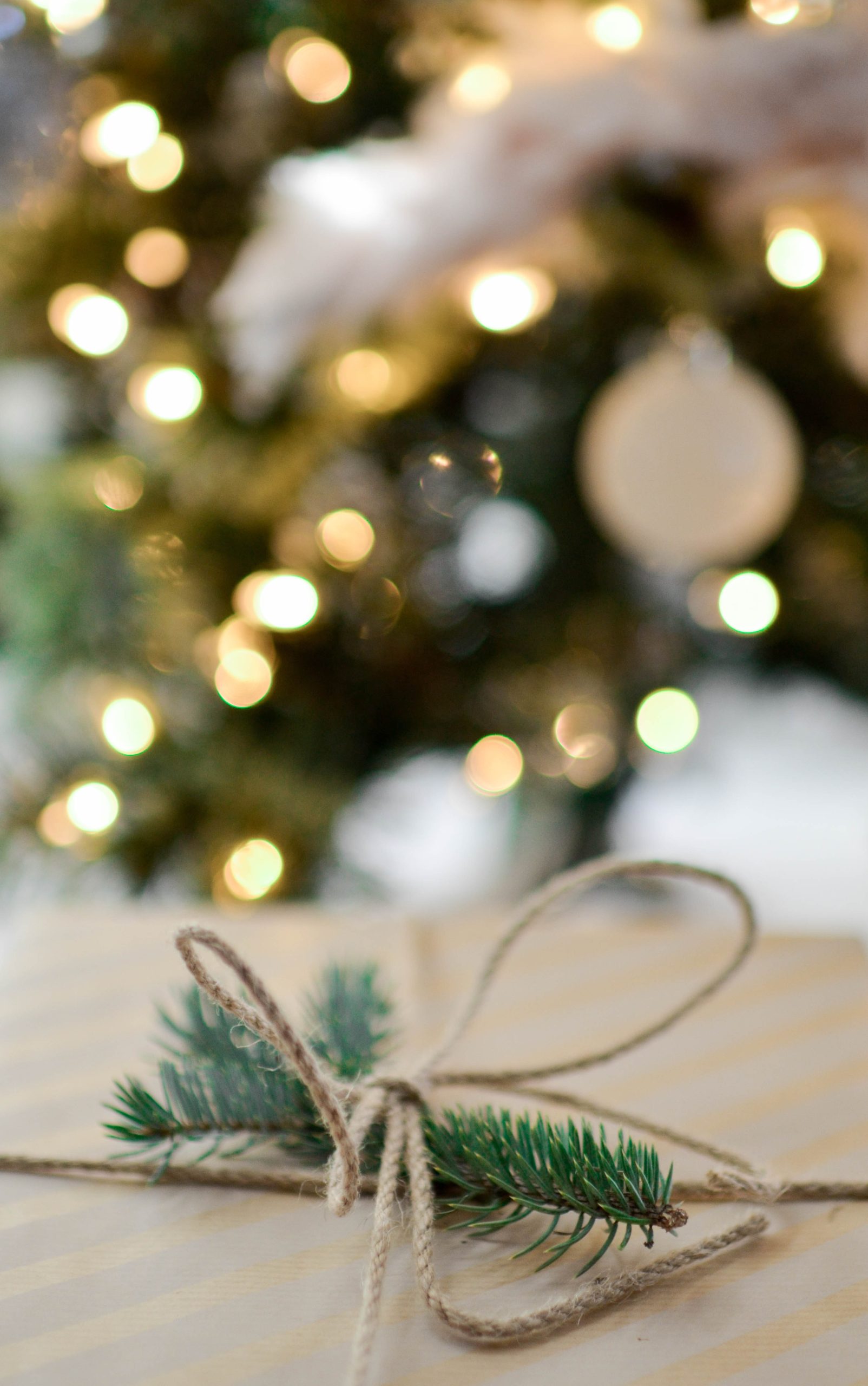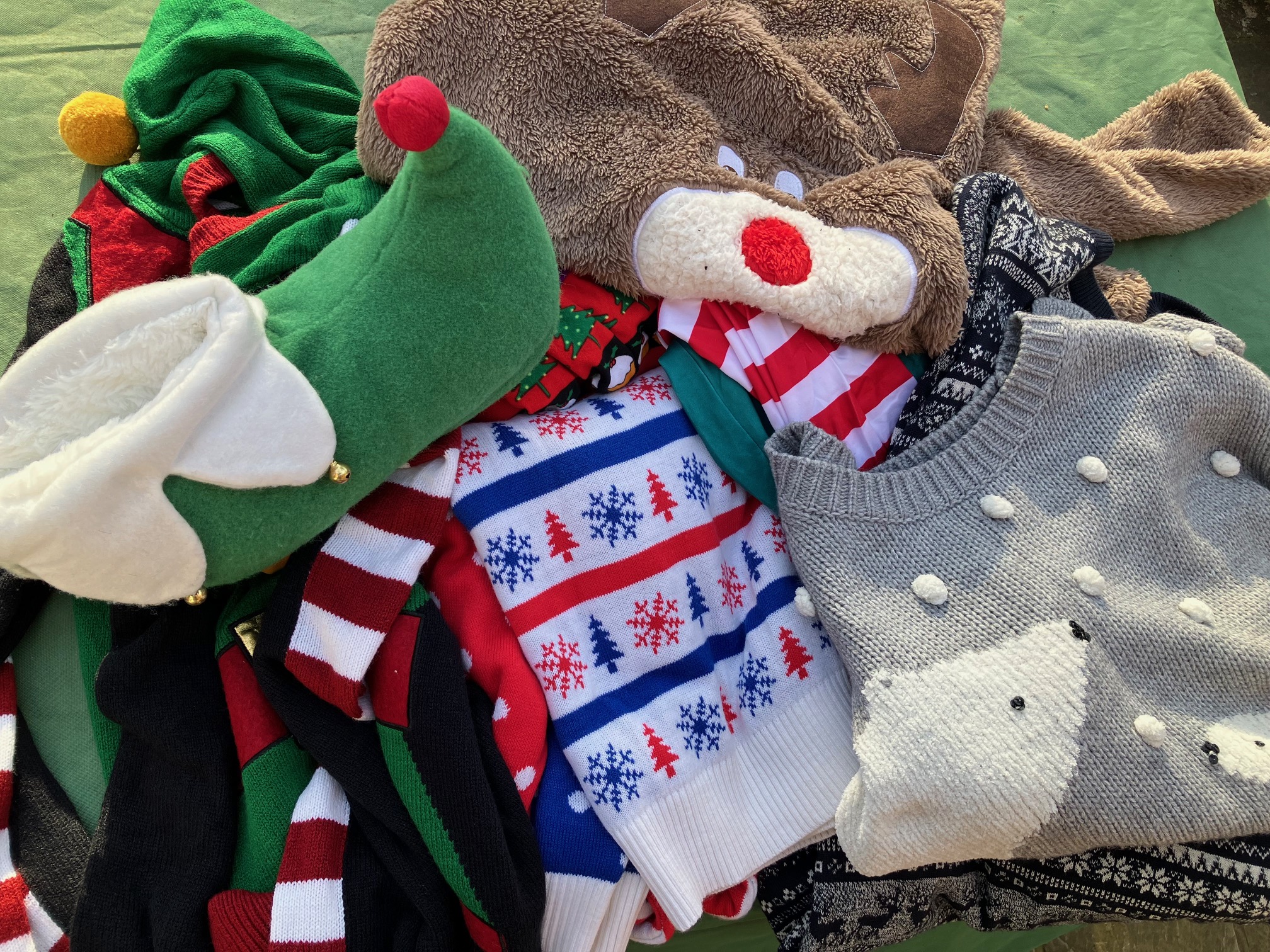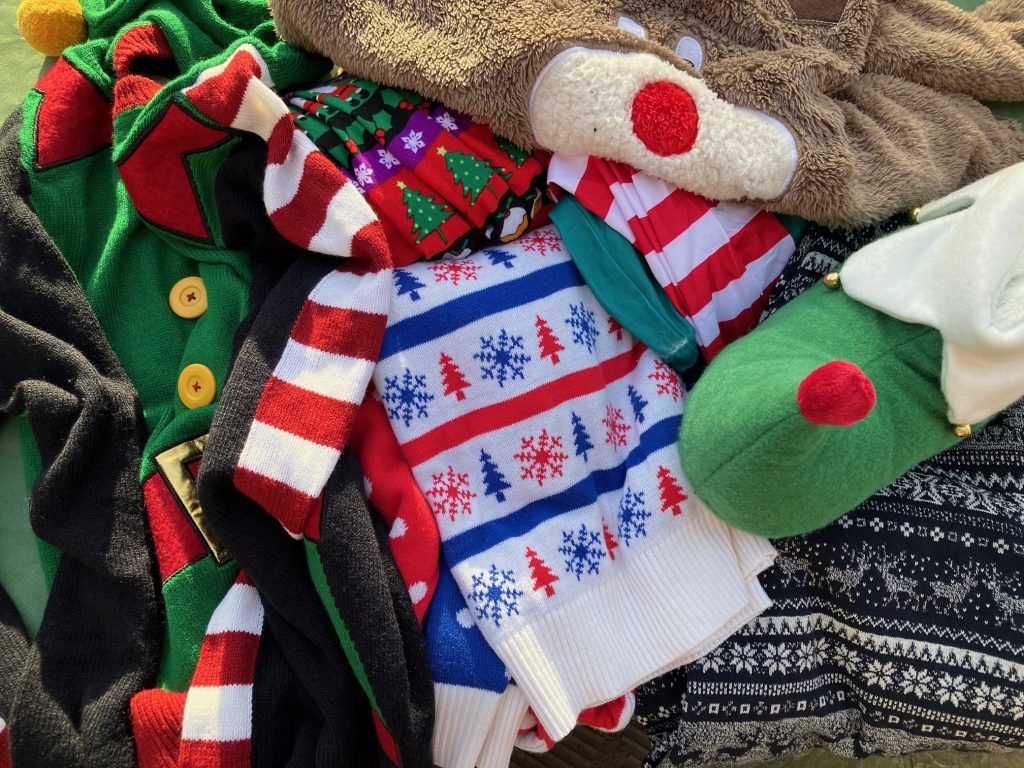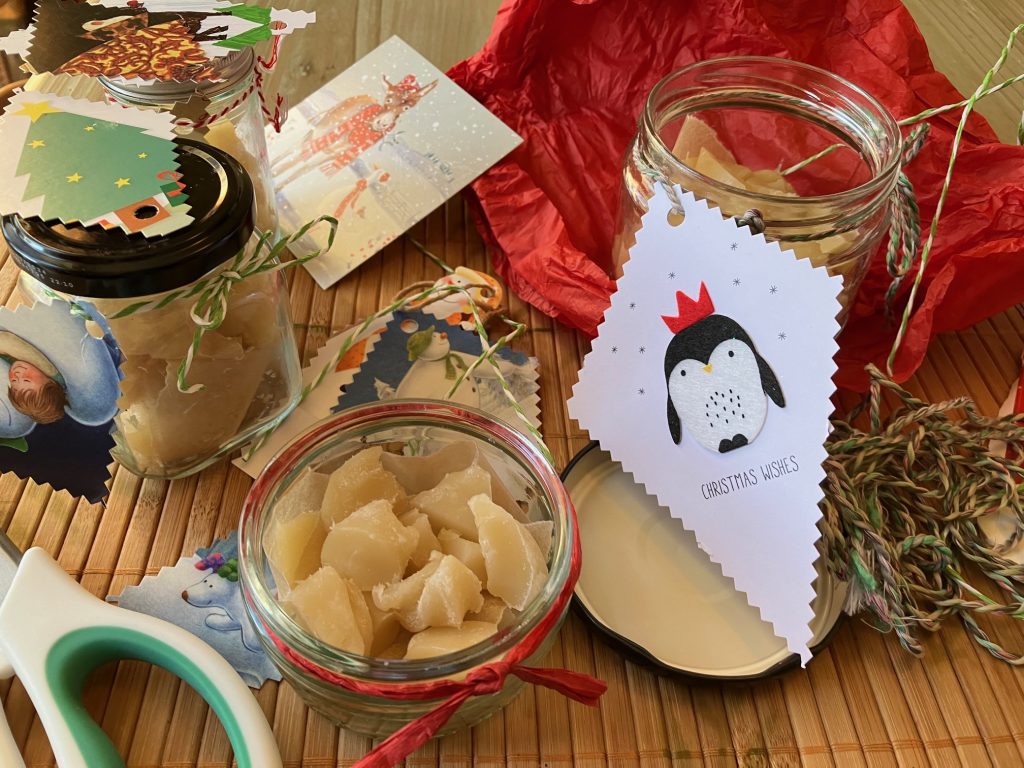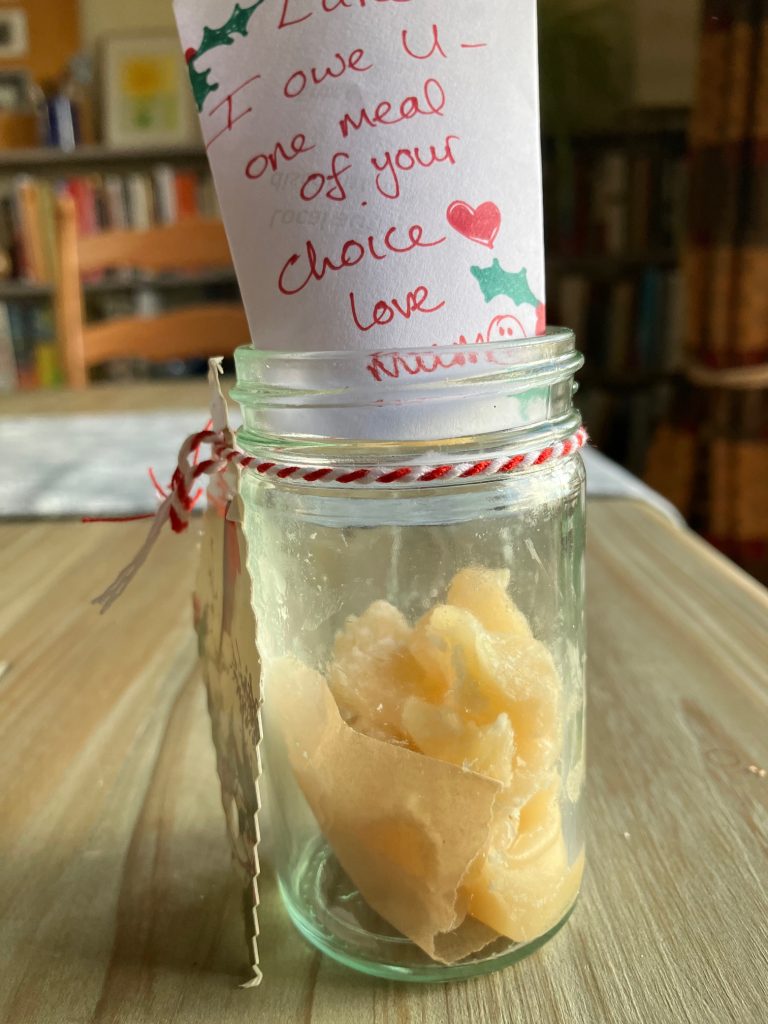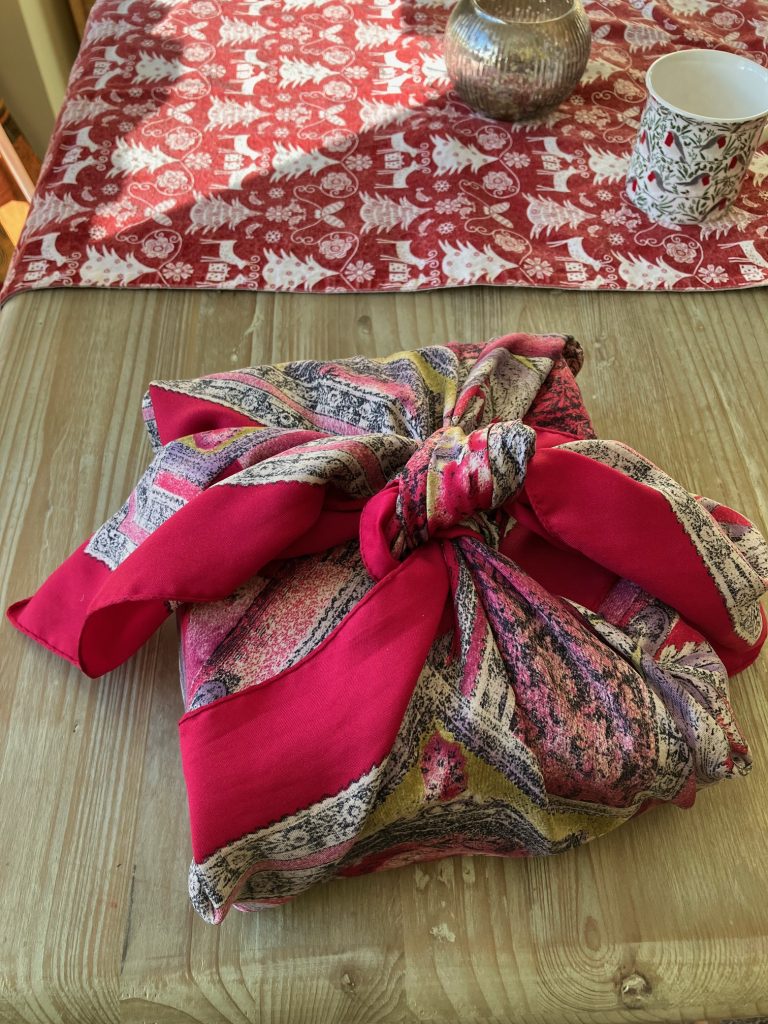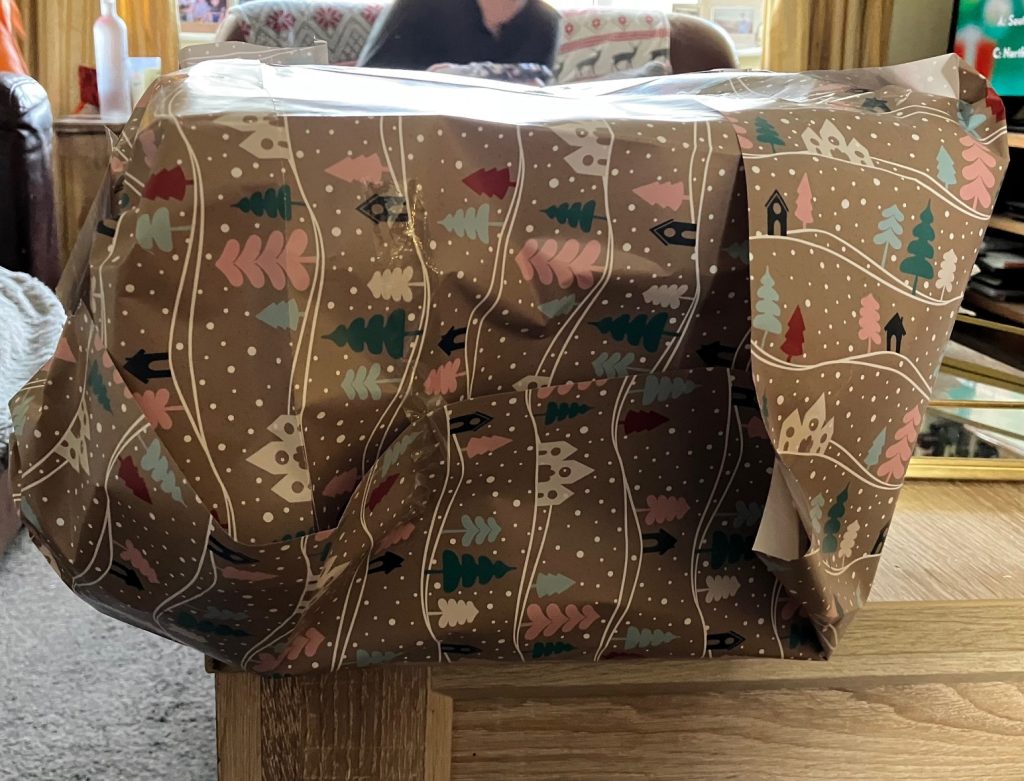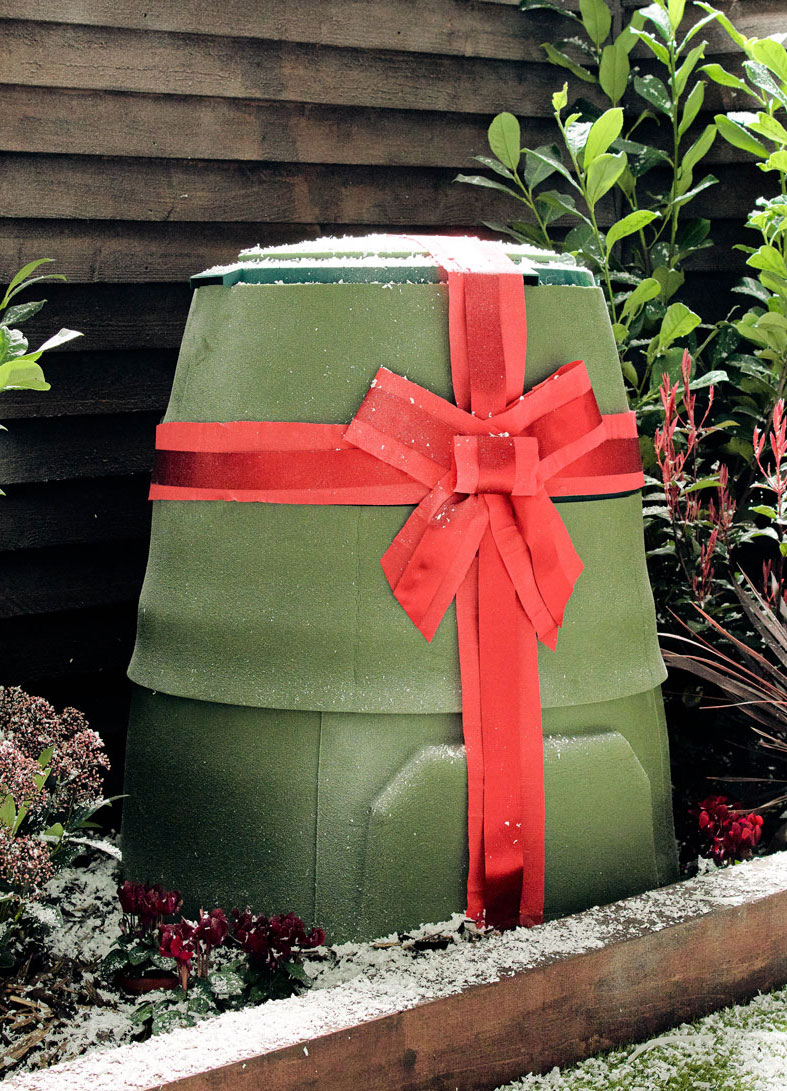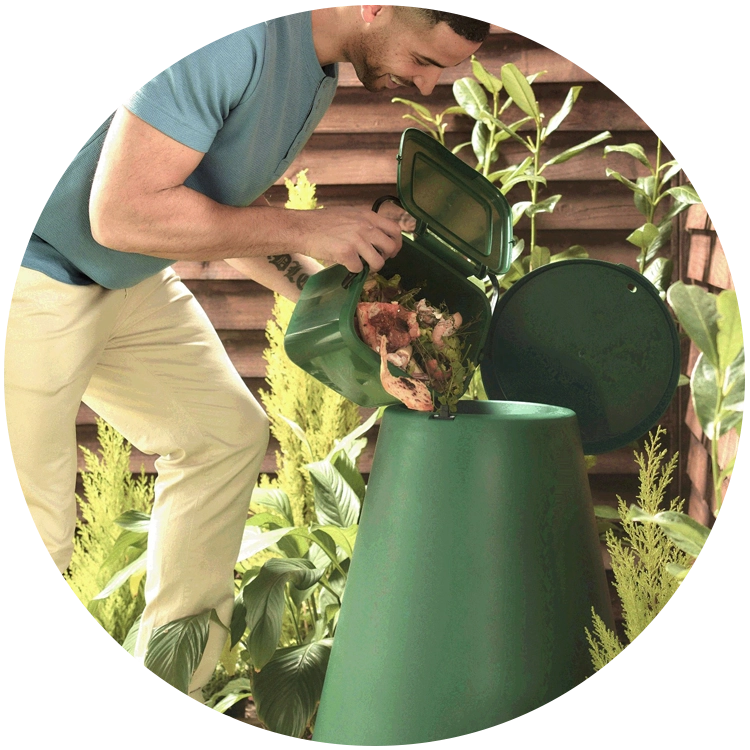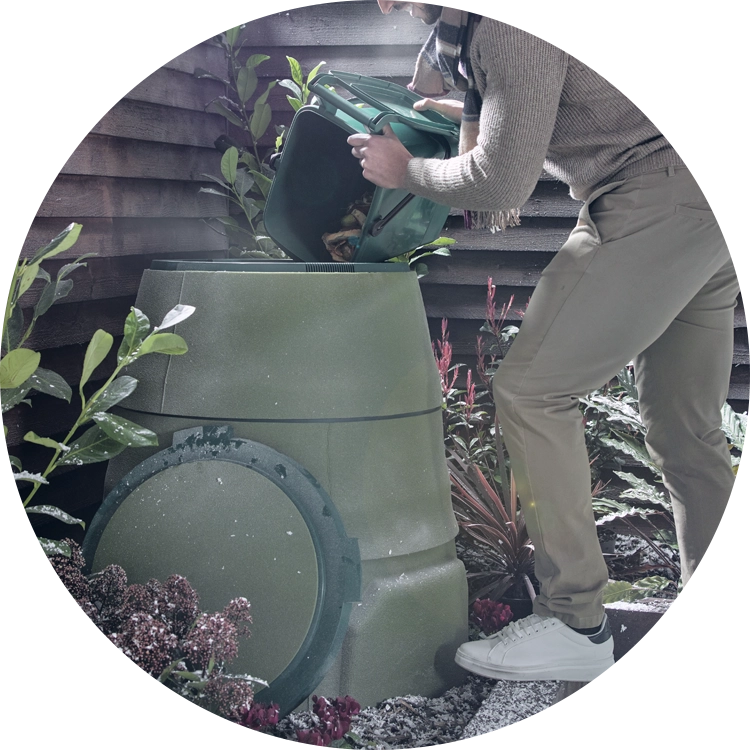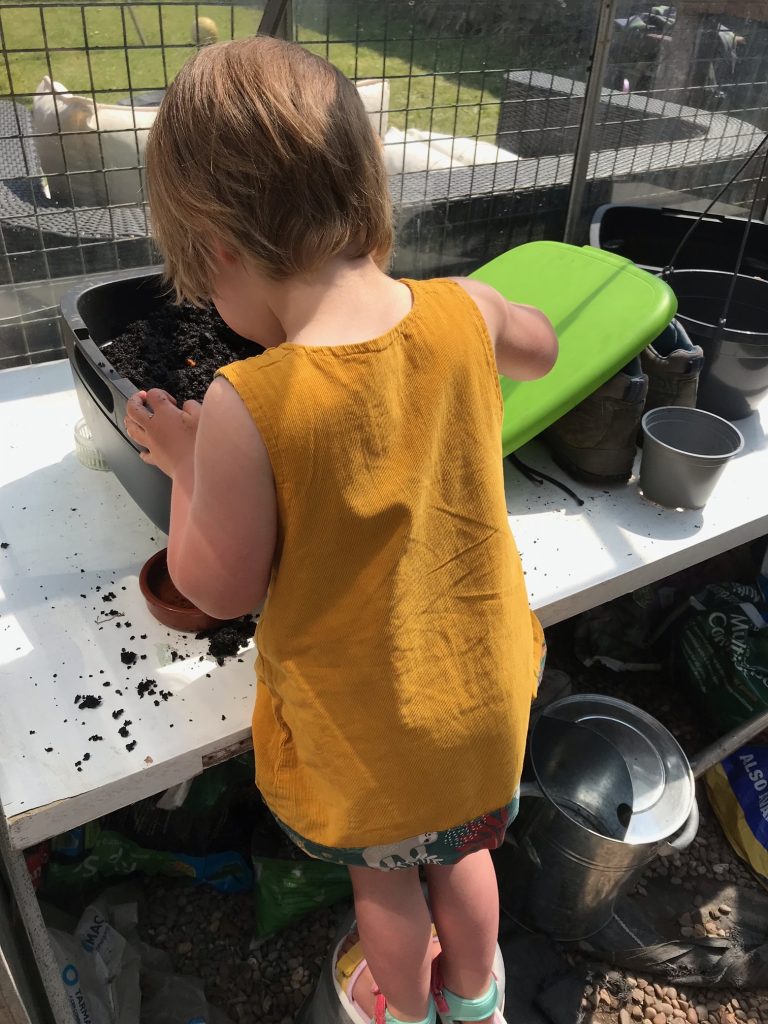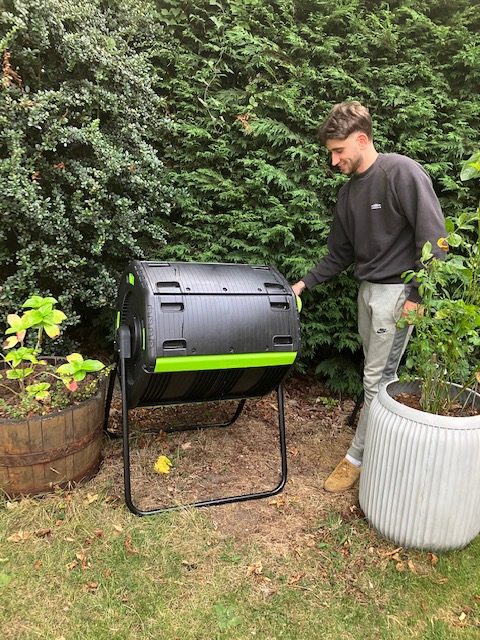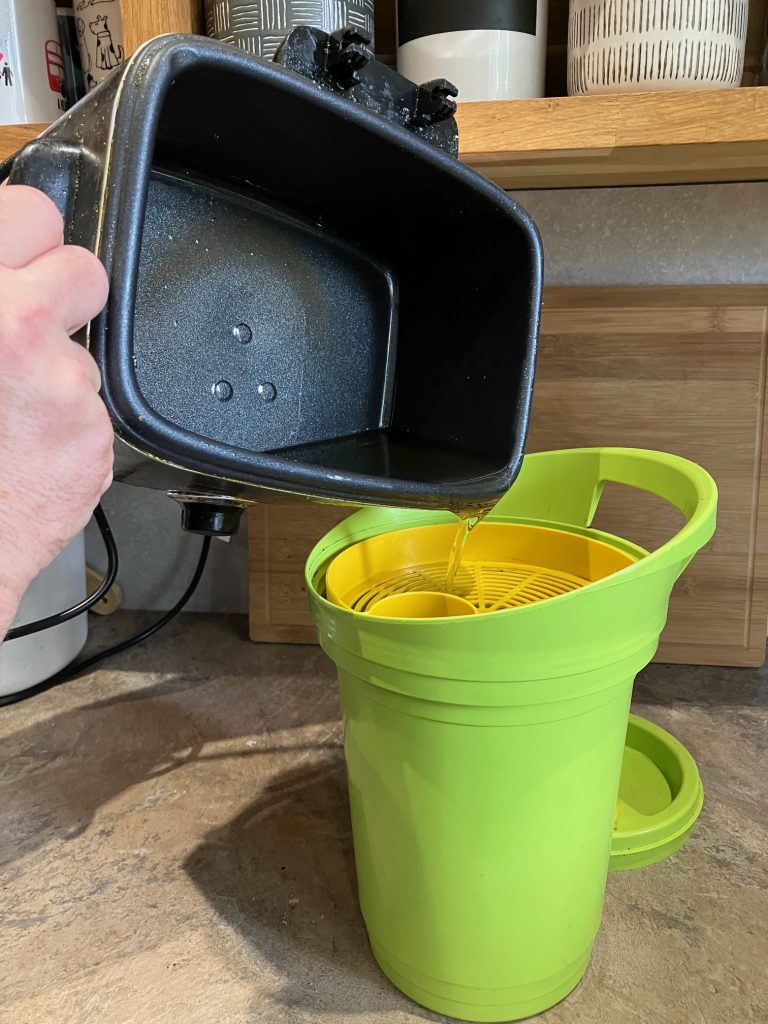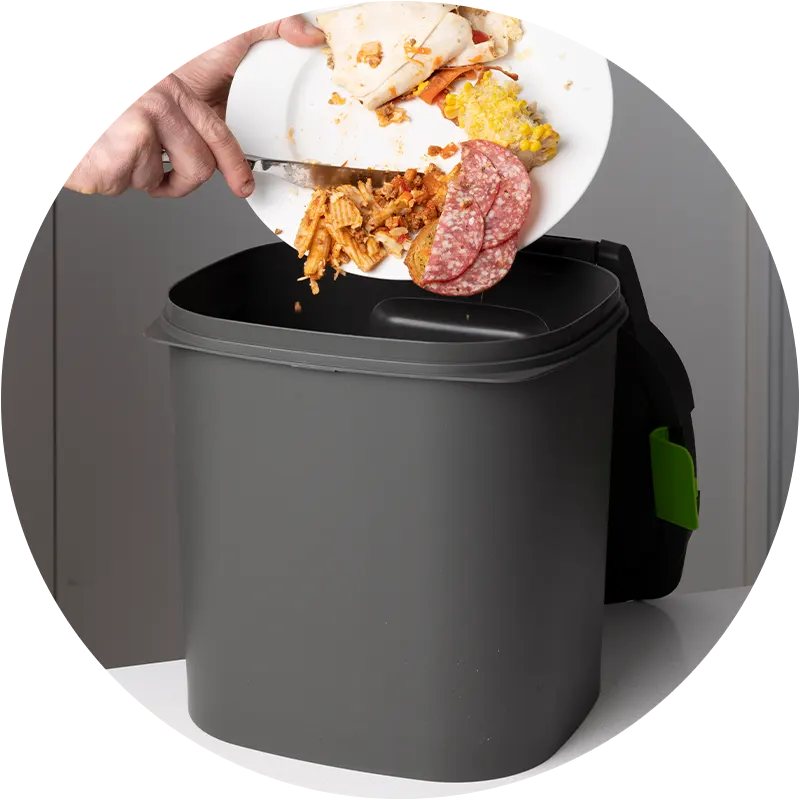Are you struggling to convince your family that green doesn’t equal mean when it comes to Christmas? We’ve compiled a list of tips to help you along the way.
1. Buy to recycle – If Christmas isn’t Christmas for you without cards – and a message on Facebook just doesn’t cut it – then buy with care and an eye on recyclability.
This means avoiding cards decorated with glitter, foil, ribbon, cellophane etc. It’s incredible how many cards feature these in abundance. Manufacturers, please stop using glitter to create the illusion of frost! Customers, stop buying these cards and perhaps manufacturers will take notice.
Support small businesses who have taken the Naked Cards pledge. This is a campaign by designers and illustrators to stop wrapping cards in cellophane. Millions of cards are sold this way. Cellophane is a single-use plastic that takes a long time to degrade completely in landfill. The campaigners hope to cut down on plastic one card at a time by keeping cards ‘naked’ – either sold in paper bags or with small peelable stickers keeping card and envelope together.
Also look for cards that are Forest Stewardship Council (FSC) certified so you know the paper used has been sustainably and ethically produced. FSC certified means the card is generated from well managed forests.
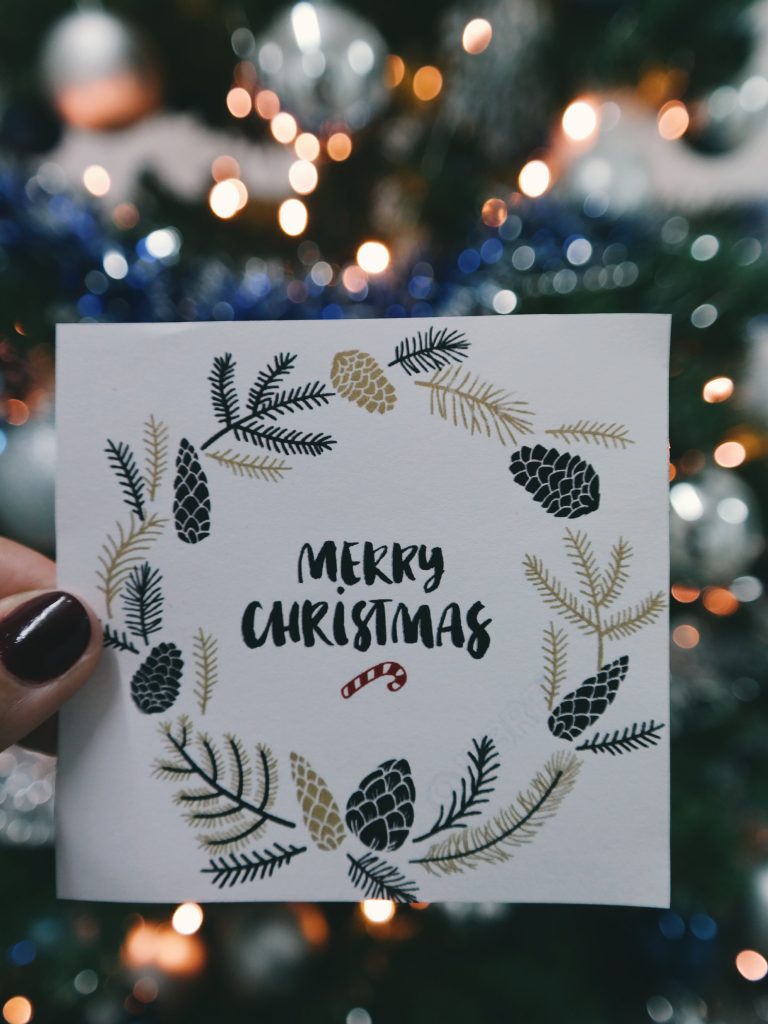
2.Decorate with cards – Christmas cards make great free decorations. I save my favourite cards and reuse them every year. Yes, it does make me look as though I have hundreds of friends. Beautiful cards are small, cheap works of art. Why would you throw them out? Keeping cards from loved ones who are no longer here in person keeps them close at Christmas.
A few years ago a friend showed me an idea on Pinterest that I just had to copy (this is why I never go on Pinterest). It was a wall display using Christmas cards arranged in the shape of a Christmas tree. It looked fantastic, or so I thought. It was only when I was taking the display down in January that my husband asked wonderingly, ‘…Are those cards shaped like a Christmas tree?’
The card tree took quite a long time to make so I haven’t repeated it; I came up with my own lazy version instead. The large picture over our mantelpiece depicts an African landscape. It’s fine for 11 months of the year but, of course, it doesn’t exactly scream Christmas, so to make it festive for December I create a display on top of the frame’s glass by blutacking Christmas cards onto it. With a bit of creative manoeuvring you can’t see the original picture underneath. Ok, you might be able to see the odd bit of original picture but it’s Christmas, chill out.
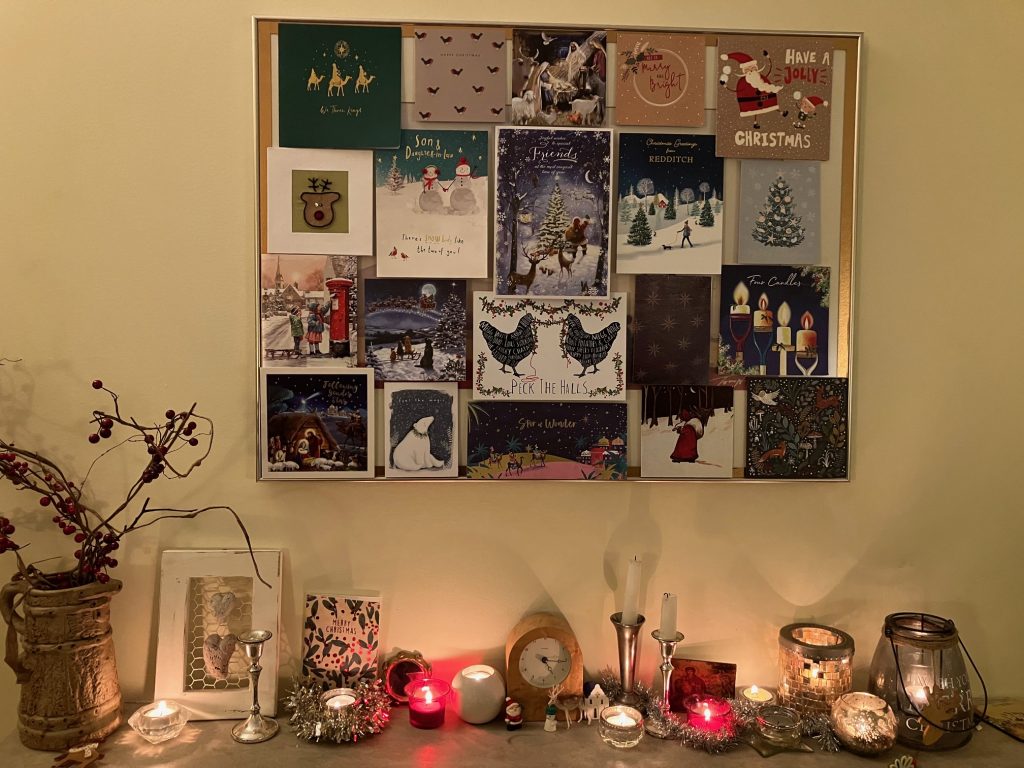
DIY decorating with cards
3.Save your stamps – Don’t forget you can save stamps – including new or used, first or second-class and foreign – for many charities. Stamps are sold by weight so the more the better for raising much-needed funds. Cut the stamp off the envelope making sure to leave roughly 1cm of envelope bordering the stamp.
4.Give pre-loved – Not long ago, giving a second-hand gift risked giving offence. In some quarters it still might, but times have changed. To more and more people, giving a gift that’s ‘pre-loved’ doesn’t mean you don’t care and couldn’t be bothered. It looks like you do care and you are bothered – about the planet as well as the person.
As someone who has always shopped in charity shops, I would be delighted to receive a second-hand gift, but I would only gift second-hand to people who feel the same way. It depends on the recipient; with some people it’s a no-no, but there could be others who are open to the suggestion, especially the young. Why not have the conversation?
Keep up to date with the second-hand choices available – the market is expanding rapidly as supply keeps up with demand. I only discovered recently that the second-hand site Vinted is not just for clothes but includes toys, homeware and books.
Steven Bethell, co-founder of the used clothing chain Beyond Retro, says second-hand shopping is booming as people try to save cash and live sustainably.
‘I think there is a category shift, in sensitivity and understanding of the environment, you can’t go back from, ‘ he says. ‘You can’t uncare that the planet is burning up. ‘
Also look out for church fairs throughout the year. Parishioners are generous with donations and save their best things and lovely but unwanted gifts for the church’s summer and Christmas fairs.
I read that Nigella Lawson doesn’t give gifts to adults. This strike me as very sensible. It’s too late for me this year – that ship has sailed – but perhaps I’ll start sounding out family members next summer. That’s still early enough for everybody to be free from the gravitational pull of the emotional blackmail that comes with Christmas. People are still able to think straight in July and the words ‘Scrooge’ and ‘Grinch’ are on summer holiday.
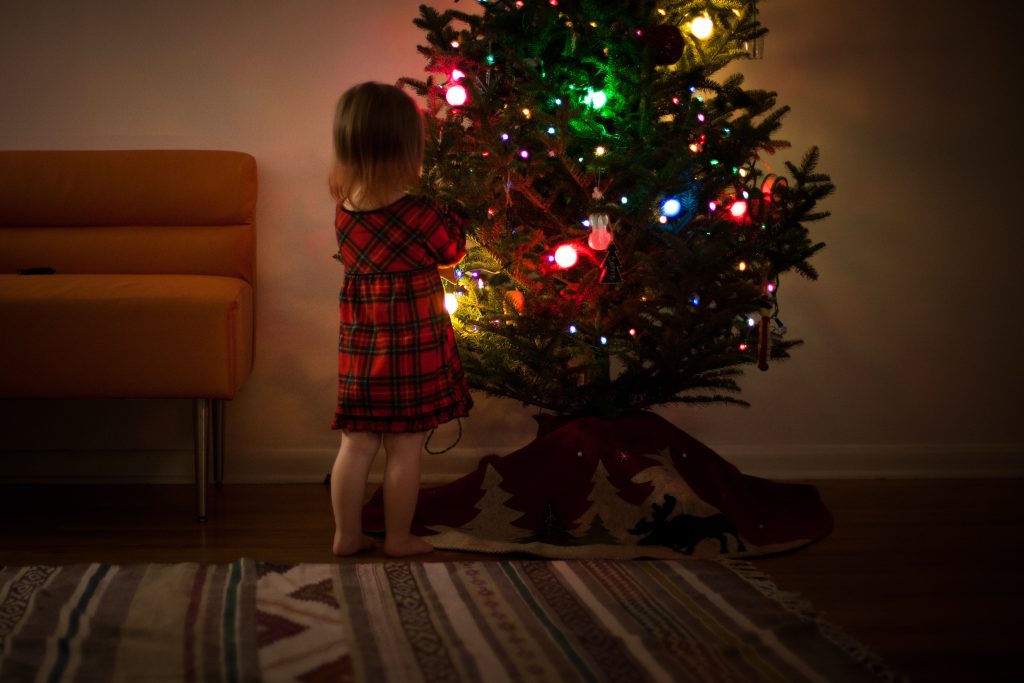
5. Use reusable crackers – (keepthiscracker.com) – These crackers slot together for you to fill yourself and they can be used year after year. In reviews, customers say they are easy to put together, a good size to fit things in and the designs look good on the festive table.
This is also a fun activity to do with children, especially if you write your own jokes! All you have to buy new is the snaps that make the bang. You can also get low-noise snaps for those who don’t like loud noises.
6.Buy ethically – Support charity websites, B Corp companies and small businesses that prioritise sustainable ethical practices. Look for gifts made from sustainable materials, such as organic cotton, bamboo, hemp and recycled materials. Check out peacewiththewild.co.uk/ goodthingsgifts.co.uk/ greentulipco.uk/ sustainablecards.com. Cards that contain seeds in the paper are a lovely idea – you plant the card in a garden with just a bit of water and it grows into flowers (eco-friendlycards.com).
Look into Green Grads – a scheme that supports makers using recycled or waste materials.
Visit craft fairs and makers’ markets – these are popular with people who want gifts to be handmade, not mass produced.

7.Make presents – If you can sew, knit, cook, bake, draw, grow or make stuff then apply these skills to making your own gifts. It’s a way of saving money but no one can argue that you haven’t made an affort; it requires a lot more thought than a click. Home-made gifts used to be fairly unusual but they are becoming increasingly popular as a way to show you care but don’t want to give unwanted presents.
These are the gifts that people remember. Last year a neighbour, remembering that I had told her my dad would much prefer spicy food to the traditional turkey, came round on Christmas morning with plates piled high with freshly-made samosas. She’s of Pakistani heritage so they were delicious. Samosas go great with roast turkey dinner, we discovered. The thoughtfulness of this homemade gift really made our Christmas.
8.Offer your time – Adults love the offer of baby-sitting or gardening services, for example. Earlier this year a friend who wanted to thank me for something said it with flowers – no, not a bouquet; she came round to our house with some cuttings from her garden and, knowing I’m a rubbish gardener, planted them for me. All summer long I thought of her every time I looked out at her colourful handiwork. So much nicer than a box of chocolates.
You can also buy experiences as opposed to gifts A friend told me that earlier in the year she had filed away a comment made by her daughter-in-law that a certain restaurant was her favourite place to eat. My friend then phoned the restaurant to buy a meal voucher as a gift. This has the added benefit of showing that you really listen to people! I’ve also gifted vouchers for a local beauty salon – this keeps money circulating locally, boosting the high street.
9.Borrow Christmas – The rental market has expanded dramatically. As well as clothes you can also rent toys and bikes and, if you’re expecting an influx of guests, you can rent tables, sofas and even table decorations.
10. Avoid food waste – We know that when it comes to food, reducing waste is best. For great ideas see the Kitche food waste app at kitche.co and Love Food Hate Waste.
The key to reducing waste is planning meals. This involves knowing how many people you’ll be catering for and how you’ll be using any leftovers. Love Food Hate Waste has a handy portion planner to help you avoid over-buying.
Reasons why people end up with so much waste at Christmas include: wanting to indulge, worry about running out of something and the feeling that everybody else is doing it.
Planning is important so map out the meals you’ll be serving, checking in your cupboards, fridge and freezer for what you’ve already got.
Think of batch cooking dishes you can easily scale up, such as curry or chilli. Do a shopping list and stick to it.
Don’t feel the need to stick to tradition by making things that family members don’t really like – perhaps that means turkey, sprouts, Christmas pudding, parsnips, mince pies? If it does, find alternatives.
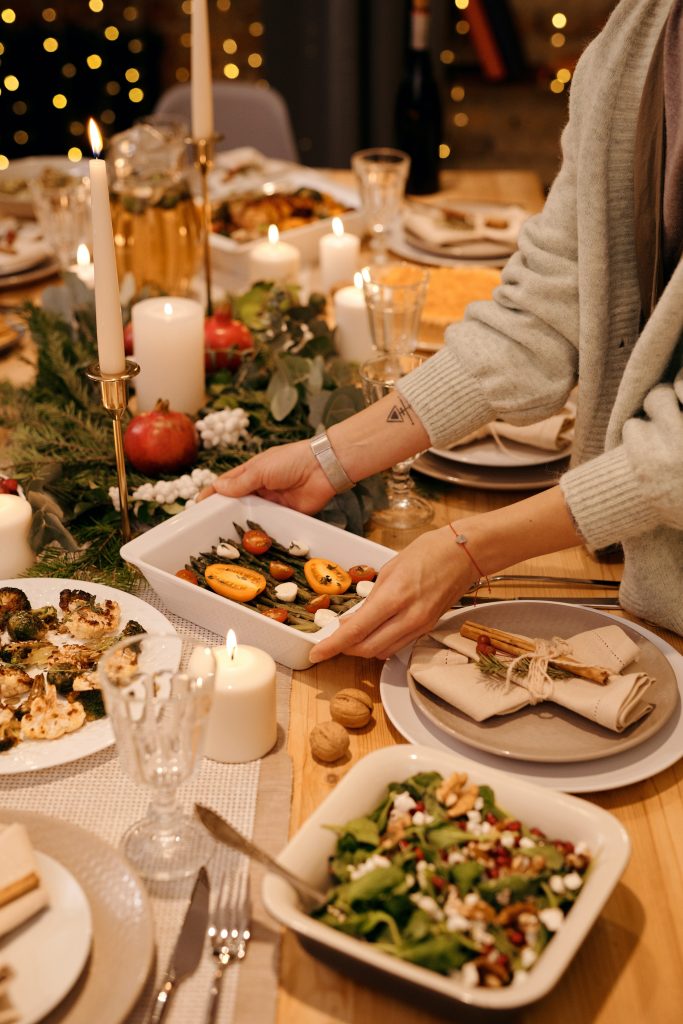
11.Compost what you can – if you’re reading this you are probably a composting enthusiast so enjoy the fact that in putting your organic waste through the composting cycle it will return to you as soil food in the spring.
You also won’t have the problem of storing growing piles of bin bags while awaiting the first refuse collection in January. Our family got notice this week that our first collection after December 22nd will be January 8th – that’s a long time to store mounting rubbish.
12.Dial it down – I’ll sign off for Christmas with my biggest tip, one that comes from the lived experience of many Christmases – some more successful than others and a few consigned to the waste bin of family history: Focus on what matters.
You don’t have to dial everything up to the max just because that’s what the adverts show. In fact, tread carefully with all those ads. Don’t believe the face of the cook as he/she smiles serenely, feeding the 5000 sitting expectantly at the table – they’re models and actors.
Also remember that no one’s stomach expands magically like Mary Poppins’ bag just because it happens to be December 25th. Let’s not forget that those ads will change on the stroke of midnight, as fast as Cinderella’s ballgown, from encouraging you to gorge yourself silly to suggesting it’s high time you joined a slimming programme, Fatty.
Last year our induction hob stopped working on December 23rd. Despite fearing I was going to have a meltdown, in actual fact I came to my senses. While waiting for the electrician, I realised that this really wasn’t a disaster; if we had to eat tuna sarnies for Christmas dinner, would it really matter in the scheme of things? This year’s mishap is next year’s anecdote. Too soon? Ok, whenever.
In the end the electrician saved the day but the lesson I learned still stands. Time for a reality check. However you choose to spend Christmas, just enjoy it in your own way. It’s allowed.
Julie


